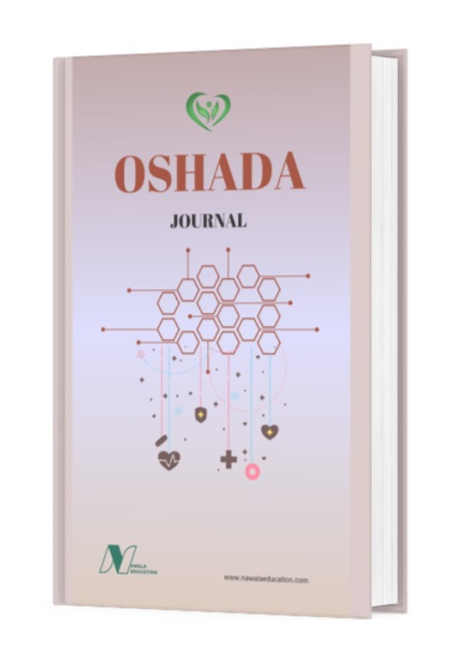Repellent Activity Testing of an Essential Oil Gel Preparation of Cinnamon (Cinnamomun Burmanii) Bark) And Kaffir Lime Peel (Citrus Hytrix) Against Aedes Aegypti Mosquitoes
DOI:
https://doi.org/10.62872/zgw3rs98Keywords:
Aedes aegypti, Essential Oil, RepellentAbstract
Dengue fever is still a disease that dominates, especially in the Papua region. To overcome this, it is necessary to modify preparations based on medicinal plants as mosquito repellents, one of which is gel preparations. This study aims to determine the repellent activity test of essential oil gel preparations of Cinnamon Bark (Cinnamomum burmannii) and Kaffir Lime Peel (Citrus Hystrix) against the Aedes aegypti mosquito. The method used in this research uses experimental methods. This research was conducted in April - November 2022. This research used two formulations, namely cinnamon bark and kaffir lime peel (FI) formulations which were compared with formulation preparations in the form of a base without active substances (FII). The tests carried out were physical quality tests and repellent tests on the Aedes aegypti mosquito. The research results show that based on physical quality tests, it is known that FI has a distinctive odor, slightly yellowish white color and a thick shape. Meanwhile, FII has the distinctive smell of patchouli oil, milky white color and thick shape. In the homogeneity test on FI and FII it was found to be homogeneous and fulfilled the requirements. In the adhesion and spreadability tests on FI and FII it was found that they met the requirements. In the pH test, the pH of FI and FII has a pH value of 7 and meets the requirements. In the repellent test using arm-in-cage with 3 replications using 20 Aedes aegypti mosquitoes. The formulas tested were FI and FII and observations made were by recording the number of mosquitoes that landed after using the repellent for 15, 30, 60, 120, 240 and 360 minutes. The research results showed that in the 15th minute the protection power was 88.3%, in the 30th minute the protection power was 88.3%, in the 60th minute the protection power was 72.3%, in the 120th minute the protection power was 67, 1%, in the 240th minute the protection power was 51.5%, and in the 360th minute the protection power was 47.7%. Based on the research results, it can be concluded that the essential oil formulation of cinnamon bark and Kaffir lime peel is efficacious as a repellent.
Downloads
References
Afianti, P.H. , dan Murrukmihadi, M., (2015), Pengaruh Variasi Kadar Gelling Agent HPMC Terhadap Sifat Fisik Dan Aktivitas Antibakteri Sediaan Gel Ekstrak Etanolik Daun Kemanggi (ocimum basilicum L., forma citratum Back), Jurnal, Majalah Farmasetika, Volume 11 Nomor 2.
Anindhita, Budiyono, H. (2015). Daya Tolak Repellent Bentuk Lotion Dengan Ekstrak Daun Alpukat (Persia americana Mill) Terhadap Nyamuk Aedes aegypti Linn. 3 ( April ) .
Anonim. 1995. Farmakope Indonesia Edisi IV . Jakarta: Departemen Kesehatan Republik Indonesia
Basri, L. (2018). Pemanfaatan Ekstrak Kayu Manis (Cinnamomum Burmanii) Sebagai Larvasida Alami Untuk Nyamuk Aedes Aegypti. Global Health Science, 3(4), 306-310. https://doi.org/10.36656/jpfh.v5i1.1001
Dama, C. (2013). Pengaruh perendaman plat resin akrilik dalam ekstrak kayu manis (Cinnamomum burmanii) terhadap jumlah blastospora Candida Albicans. E-GiGi, 1(2). https://doi.org/10.35790/eg.1.2.2013.3106
Devitria, R. (2021). Pemanfaatan Ekstrak Etanol Kayu Manis (Cinamommum burmanii) sebagai Repellent Alami Nyamuk Aedes aegypti. Jurnal Sains dan Teknologi Laboratorium Medik, 7(2), 6-11.
Fradin, M.S., & Day, J.F. (2002). Perbandingan khasiat obat nyamuk terhadap gigitan nyamuk New England Journal of Medicine, 347 (1), 13-18. https://doi.org/10.1056/NEJMoa011699
Garg , A. , D. Anggarwal , S. Garg , dan A.K. Singla, (2002), Penyebaran Formulasi Semipadat, Teknologi Farmasi: USA
Guenther, E., (1987). Minyak Atsiri, jilid 1, diterjemahkan oleh Ketaren, 134, Jakarta, UI press
Gunawan, E.S. 2021. Pengaruh Pemberian Ekstrak Kayu Manis (Cinnamomum Burmannii) Terhadap Gambaran Mikroskopis Hepar, Kadar SGOT dan SGPT Darah Mencit BALB/C yang Diinduksi Paracetamol. Skripsi, Universitas Diponegoro.
Intan, K., Diani, A., & Nurul, A. (2021). Aktivitas Antibakteri Kayu Manis (Cinnamomum burmanii) terhadap Pertumbuhan Staphylococcus aureus. JURNAL KESEHATAN PERINTIS, 8(2), 121-127. https://doi.org/10.33653/jkp.v8i2.679
Kristanti, M.C. , Asmoro , V.D. dan Setyarini, I. (2005). Optimasi komposisi Sistem Gel dan Oleum Citronellae Dalam Formula Gel Repelan dengan Gelling Agent CMC (Carboxymethyl Cellulose) dan Gliserol, Fakultas Farmasi, Universitas Yogyakarta.
Lukman, A., Susanti, E., & Oktaviana, R., (2012), Formulasi Gel Minyak Kulit Kayu Manis ( Cinnamomum burmannii BI ) Sebagai Sediaan Antinyamuk , Jurnal Penelitian Farmasi Indonesia , 1 ( 1 ), 24-29 . Sanata Dharma
Lukman, Anita Emma Susanti, dan Roli Oktaviana. (2012) Formulasi Gel Minyak Kulit Kayu Manis (Cinnamomum burmannii BI) sebagai sediaan Antinyamuk. Jurnal penelitian Farmasi Indonesia 1(I), September 2012 : 24-29
Maharani, D. (2009). Formulasi Losio Anti Nyamuk Minyak Kulit Kayu Manis (Cinnamomun burmanii Bl), Skripsi, Sekolah Tinggi Ilmu Farmasi Riau
Mansjoer, A. (2000). Kapita Selekta Kedokteran, Edisi III jilid II, Jakarta: Media Aesculapius, REFERENSI
MEDLINE dan OBAT FKUI, (2003). Risiko kesehatan dan manfaat pengusir serangga. Penerbitan Cliggot, Divisi Komunikasi. Serangga Med 19 (6): 256-264. http://www.Medscape.com/viewarticle/438257 2.
Notoatmodjo. (2012). Metode Penelitian Kesehatan. Jakarta : Rincka Cipta
Nur Fadilah, A.L, Cahyati, W.H., & Windraswara, R. (2017). Uji Daya Proteksi Ekstrak Daun Pepaya ( Carica papaya L ) Dalam Sediaan Lotion Dengan Basis PEG400 Sebagai Repellent Terhadap Aedes aegypti . Perawatan : Jurnal Ilmiah Ilmu Kesehatan . 4 ( 3 ), 318 .
Paringga, I. (2019). Efek larvasida minyak atsiri kulit batang kayu manis (cinnamomum burmanii) terhadap larva aedes aegypti.
Ramadania, E., Norfai, N., & Rahman, E. (2020). Potensi Ekstrak Kayu Manis (Cinnamomum Burmanii Blume) Sebagai Larvasida Alami Terhadap Aedes Albopictus. An-Nadaa: Jurnal Kesehatan Masyarakat (e-Journal), 7(2), 104-109.
Reppi, N. B., Mambo, C., & Wuisan, J. (2016). Uji efek antibakteri ekstrak kulit kayu manis (Cinnamomum burmannii) terhadap Escherichia coli dan Streptococcus pyogenes. Jurnal E-Biomedik, 4(1). https://doi.org/10.35790/ebm.4.1.2016.12204
Sari, 2021. Potensi Estrak Kayu Manis (Cinnamomum burmanii) sebagai Insektisida terhadap Nyamuk Culex sp. Dengan Metode Fogging. Universitas Brawijaya.
Simon, Patrisia, (2012). Formulasi Dan Uji Penetrasi Mikroemulsi Natrium Diklofenak Dengan Metode Sel Difusi Franz Dan Metode Tape Stripping, Skripsi, Prodi Farmasi FMIPA Universitas Indonesia,
Tiwary, M,et al., 2007. Chemical Composition and Larvicidal Activities of the Essential Oil of ZanthoxylumarmatumDC Against Three Mosquito Vectors. Journal Vector Borne Disease, 198–204.
Ulaen Depok, Selfie PJ, dkk. (2012). Pembuatan Salep Anti Jerawat Dari Ekstrak Rimpang Temulawak (Curcuma xanthorrhiza Roxb.). Manado : Poltekkes Kemenkes Manado.
Utomo, P.P., & Supriyatna, N. (2014). Perbandingan daya proteksi losion anti nyamuk dari beberapa jenis minyak atsiri tanaman pengusir nyamuk . Industri Biopropal, 5 (2), 79 84.
Downloads
Published
Issue
Section
License
Copyright (c) 2024 Fitriah Ardiawijianti Iriani, Rosita Irianti Dehi, Alpha Christyananda Damar (Author)

This work is licensed under a Creative Commons Attribution-ShareAlike 4.0 International License.

This work is licensed under a Creative Commons Attribution-ShareAlike 4.0 International License.











